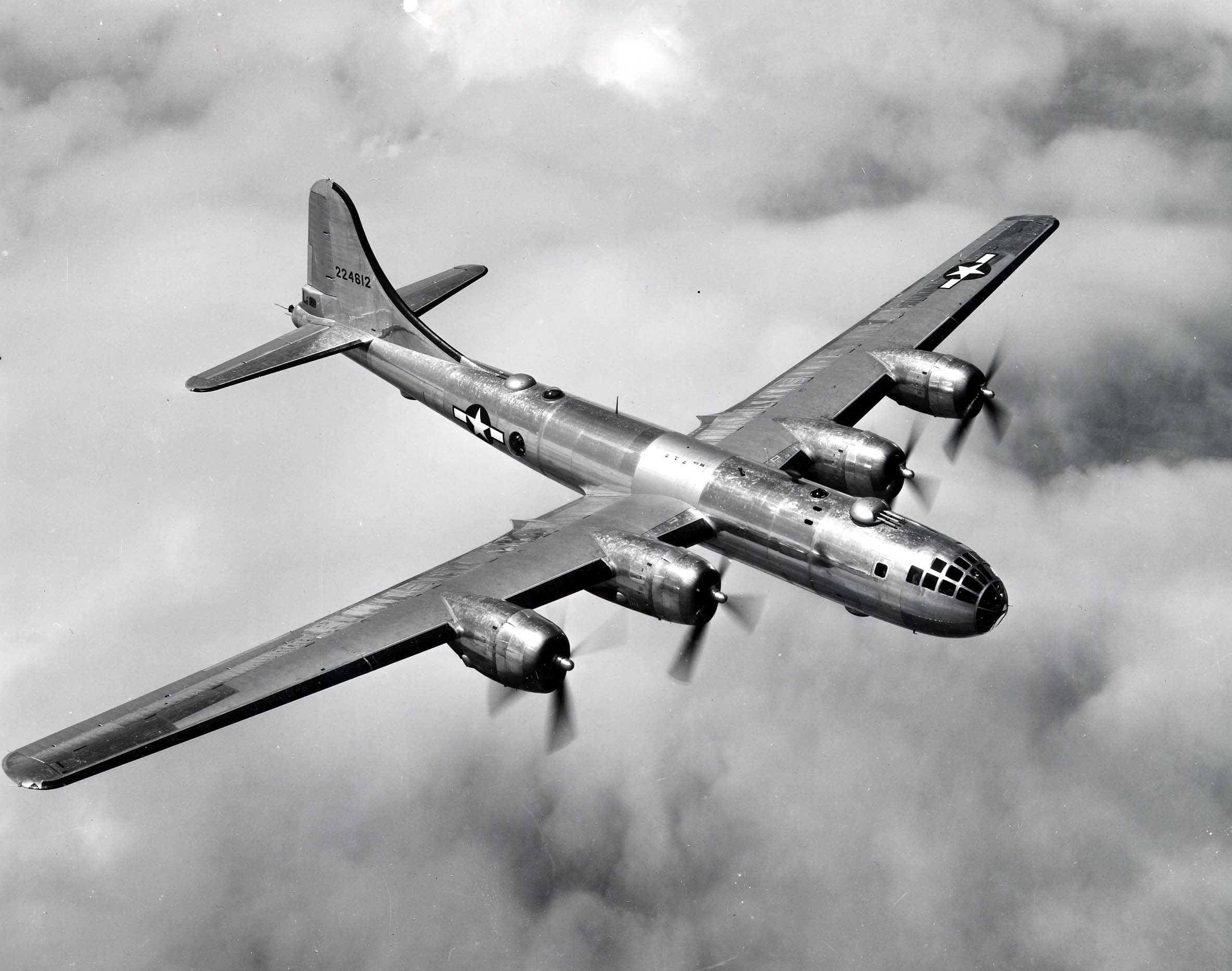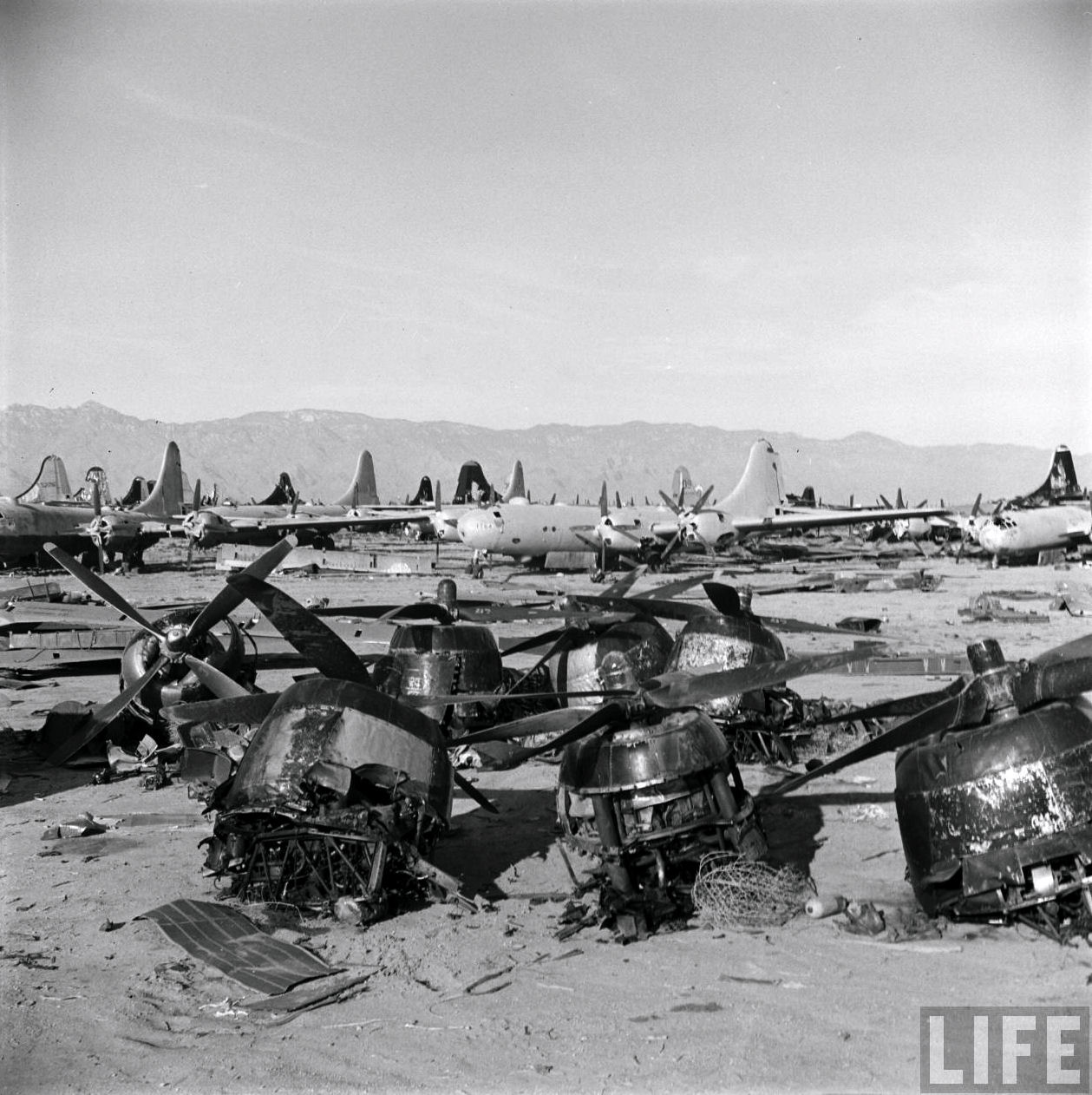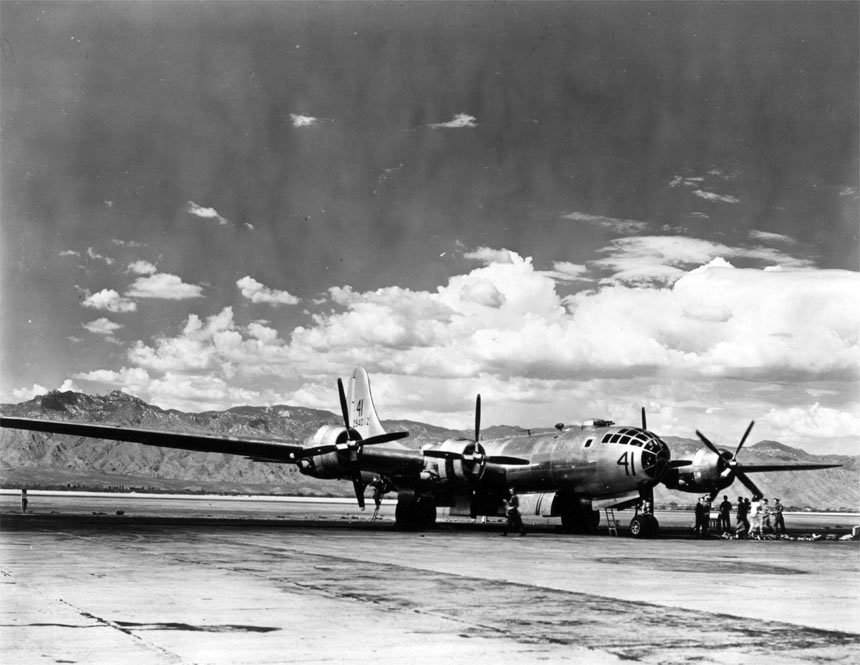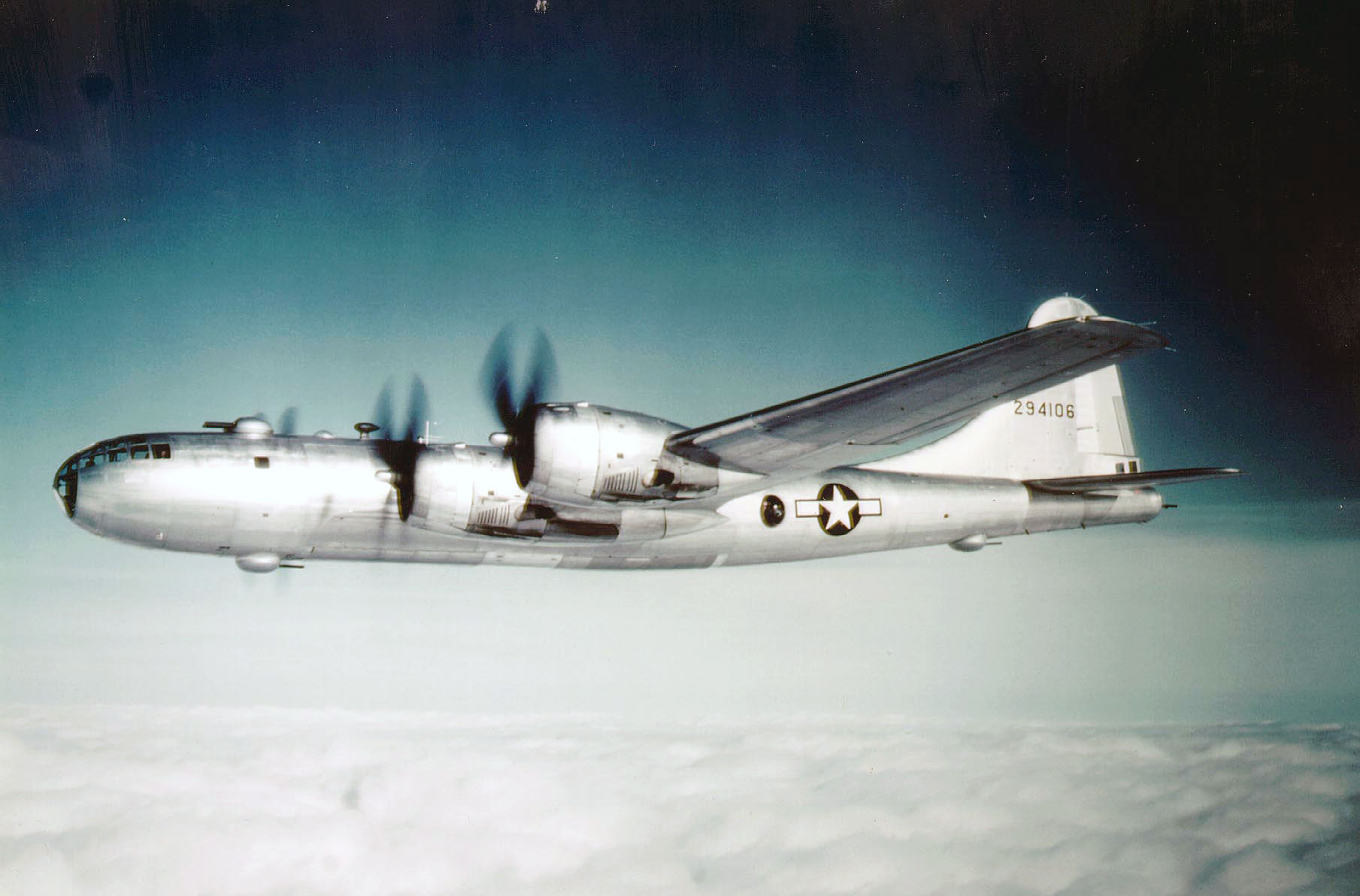
4 November 1954: The Strategic Air Command retired its last B-29 Superfortress four-engine heavy bomber to the aircraft storage facility at Davis-Monthan Air Force Base, Tucson, Arizona.
The B-29 Superfortress was the most technologically advanced—and complex—aircraft of World War II. It required the manufacturing capabilities of the entire nation to produce. Over 1,400,000 engineering man-hours had been required to design the prototypes.
The Superfortress was manufactured by Boeing at Seattle and Renton, Washington, and Wichita, Kansas; by the Glenn L. Martin Company at Omaha, Nebraska; and by Bell Aircraft Corporation, Marietta, Georgia.
There were three XB-29 prototypes, 14 YB-29 pre-production test aircraft, 2,513 B-29 Superfortresses, 1,119 B-29A, and 311 B-29B aircraft. The bomber served during World War II and the Korean War and continued in active U.S. service until 1960. In addition to its primary mission as a long range heavy bomber, the Superfortress also served as a photographic reconnaissance airplane, designated F-13, a weather recon airplane (WB-29), and a tanker (KB-29).
The B-29 was operated by a crew of 11 to 13 men. It was 99 feet, 0 inches (30.175 meters) long with a wingspan of 141 feet, 3 inches (43.068 meters). The vertical fin was 27 feet, 9 inches (8.305 meters) high. Empty weight was 74,500 pounds (33,793 kilograms) with a maximum takeoff weight of 133,500 pounds (60,555 kilograms).
The B-29 was powered by four air-cooled, supercharged, 3,347.66-cubic-inch-displacement (54.858 liter) Wright Aeronautical Division Cyclone 18 (also known as the Duplex-Cyclone) 670C18BA4 (R-3350-23A) two-row 18-cylinder radial engines, which had a Normal Power rating of 2,000 horsepower at 2,400 r.p.m., and 2,200 horsepower at 2,800 r.p.m. for takeoff. They drove 16 foot, 7 inch (5.055 meter) diameter, four-bladed, Hamilton Standard constant-speed propellers through a 0.35:1 gear reduction. The R-3350-23A was 6 feet, 4.26 inches (1.937 meters) long, 4 feet, 7.78 inches (1.417 meters) in diameter and weighed 2,646 pounds (1,200 kilograms).
The maximum speed of the B-29 was 357 miles per hour (575 kilometers per hour) at 30,000 feet (9,144 meters), though its normal cruising speed was 220 miles per hour (354 kilometers per hour) at 25,000 feet (7,620 meters). The bomber’s service ceiling was 33,600 feet (10,241 meters) and the combat range was 3,250 miles (5,230 kilometers).
The Superfortress could carry a maximum of 20,000 pounds (9,072 kilograms) of bombs in two bomb bays. For defense it had 12 Browning M2 .50-caliber machine guns in four remote-controlled turrets and a manned tail position.
A number of B-29 Superfortresses are on display at locations around the world, but only two, the Commemorative Air Force’s B-29A-60-BN 44-62070, Fifi, and B-29-70-BW 44-69972, Doc, are airworthy. (After a lengthy restoration, Doc received its Federal Aviation Administration Special Airworthiness Certificate, 19 May 2016.)
The Superfortress could carry a maximum of 20,000 pounds (9,072 kilograms) of bombs in two bomb bays. For defense it had 12 Browning M2 .50-caliber machine guns in four remote-controlled turrets and a manned tail position.

© 2016, Bryan R. Swopes


